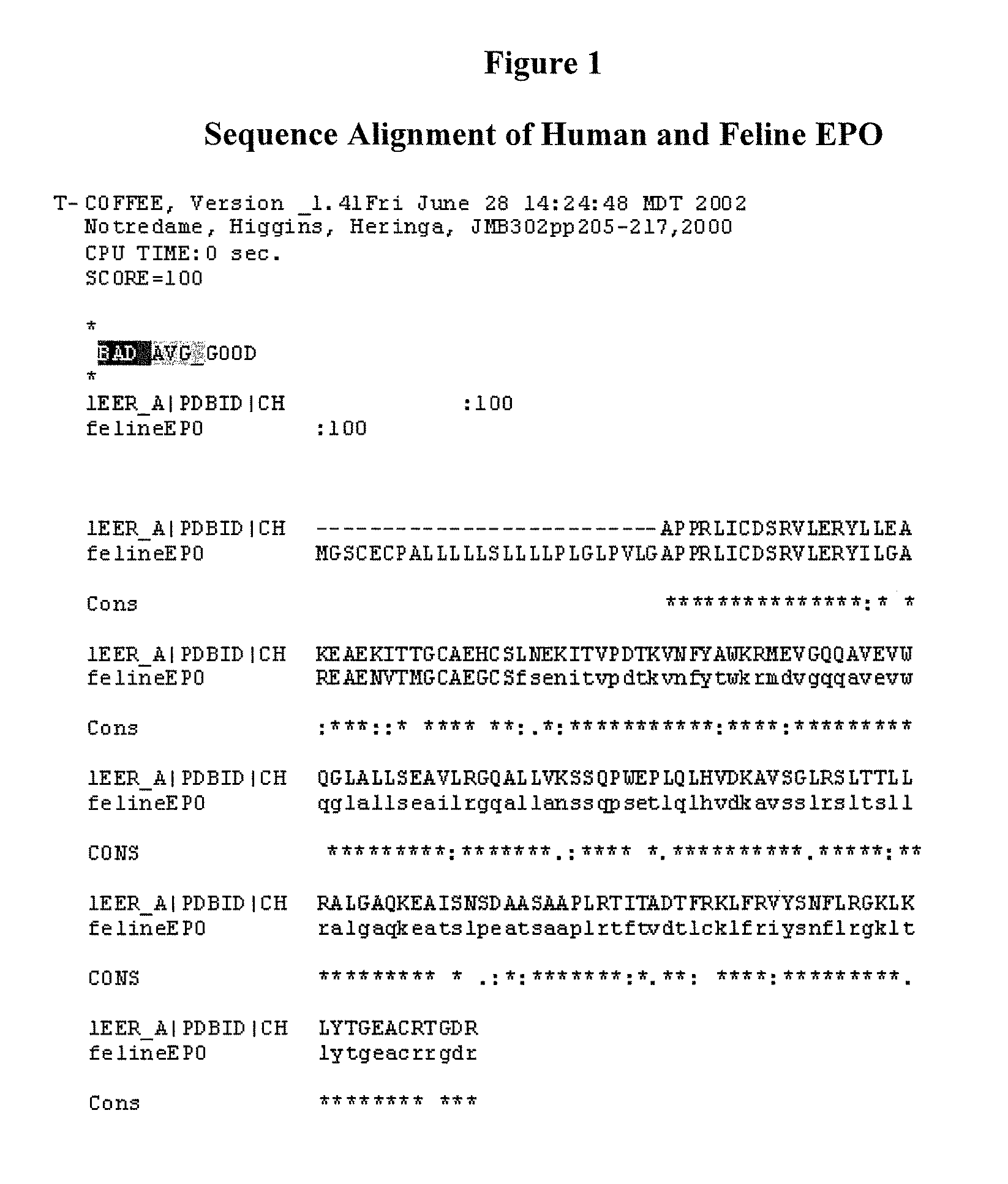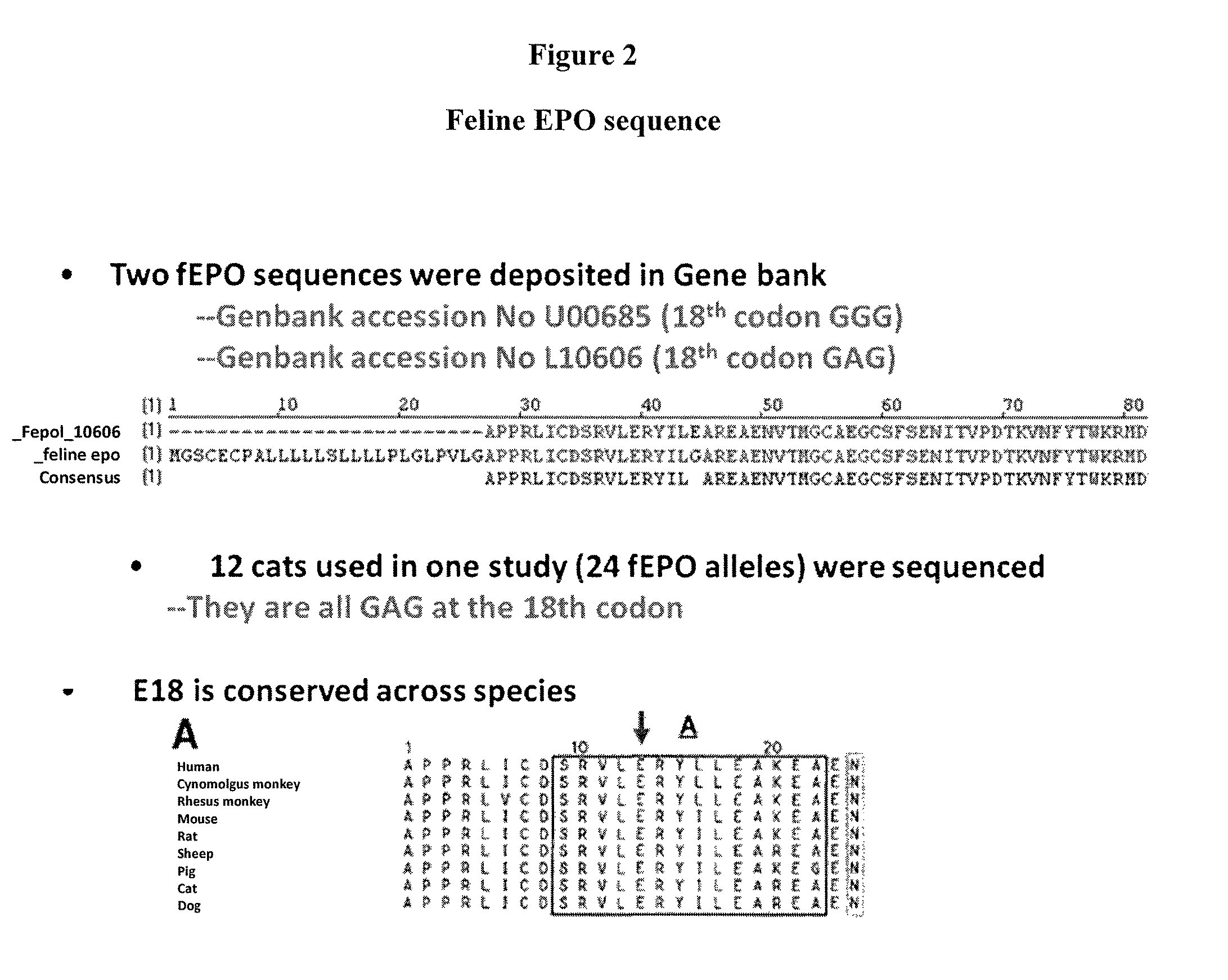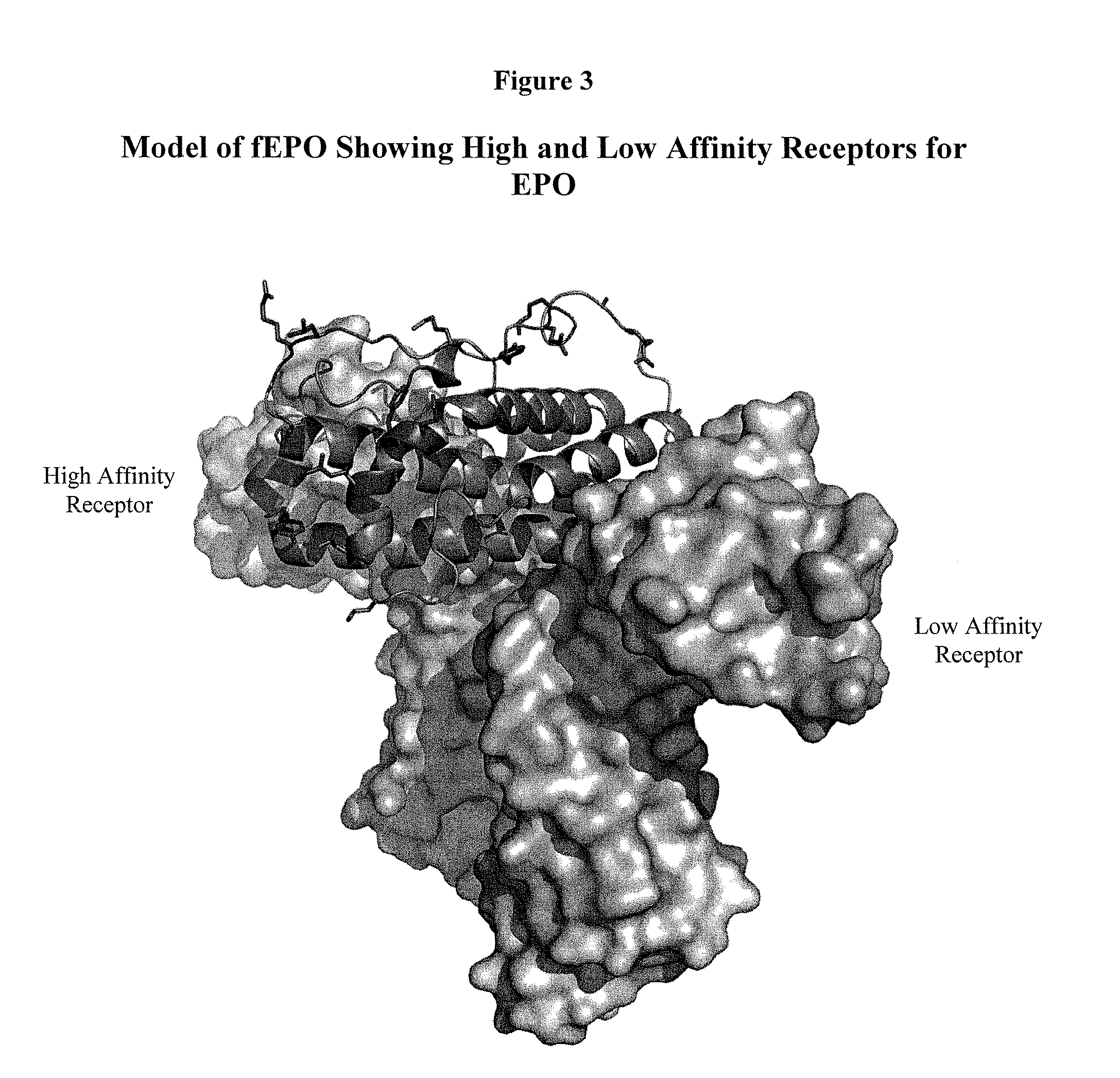Modified animal erythropoietin polypeptides and their uses
a technology of erythropoietin and polypeptides, which is applied in the field of modified animal erythropoietin polypeptides, can solve the problems of inability to enzymatically replicate, general mismatch of natural bases to some degree, and restricted methods in the art, so as to increase the therapeutic half-life
- Summary
- Abstract
- Description
- Claims
- Application Information
AI Technical Summary
Benefits of technology
Problems solved by technology
Method used
Image
Examples
example 1
[0528]This example describes one of the many potential sets of criteria for the selection of preferred sites of incorporation of non-naturally encoded amino acids into fEPO.
[0529]This example demonstrates how preferred sites within the fEPO polypeptide were selected for introduction of a non-naturally encoded amino acid. Molecular modeling and known information regarding the secondary structure of fEPO was used to determine preferred positions into which one or more non-naturally encoded amino acids could be introduced. Other fEPO structures and known crystal structure information regarding fEPO was utilized to examine potential variation of primary, secondary, or tertiary structural elements between crystal structure datasets. The coordinates for these structures are available from the Protein Data Bank (PDB) (Bernstein et al. J. Mol. Biol. 1997, 112, pp 535) or via The Research Collaboratory for Structural Bioinformatics PDB. The structural model 1 CN4 contains the entire mature 1...
example 2
[0534]This example details cloning and expression of a modified fEPO polypeptide in E. coli.
[0535]This example demonstrates how a fEPO polypeptide including a non-naturally encoded amino acid can be expressed in E. coli. Nucleotide sequences encoding fEPO are produced generally as described in Matthews et al., (1996) PNAS 93:9471-76. Fetal liver, adult liver, fetal kidney and adult kidney cDNA libraries are templates for cloning cDNA encoding full length and mature fEPO, with fetal liver giving the best result. Primers used for cloning full length and mature fEPO could be primers known to those skilled in the art including 5′cagttacatatgggagttcaegaatgtectgcctgg3′SEQ ID NO: 21; and 5′cagttacatatgetccaccaagattaatetgtg3′SEQ ID NO: 22. An example of a 3′ primer sequence that could be used for this cloning is 5′ctgeaactegagtcatctgtcceetgtcetgcag3′ SEQ ID NO: 23. The reaction conditions for the cloning can be 94° C. for two minutes, with 30 cycles of 94° C. for 30 seconds, 50° C. for one...
example 3
[0540]A suppression expression DNA expression vector was constructed according to the invention, expressing feline erythropoietin protein (fEPO).
A. Expression Vector Construction
[0541]The expression construct, depicted in FIG. 25, comprises eight copies of a hybrid tRNA gene encoding an tRNA transcript capable of being charge with p-acetylphenylalanine by it's cognate tRNA synthetase. Each copy of the tRNA gene includes a H1 promoter region, the tRNA sequence and a polymerase III transcription termination signal.
[0542]Following the tRNA genes is located a Simian virus SV40 origin of replication (SVO), which facilitates replication of the expression construct (vector) in COS cells following transient transfection.
[0543]Thereafter is located an expression cassette for the gene sequences of interest, which in this case is the feline EPO coding region. First in the cassette is the human cytomegalovirus promoter (CMV), which drives expression of the message. The message in this construct...
PUM
| Property | Measurement | Unit |
|---|---|---|
| molecular weight | aaaaa | aaaaa |
| molecular weight | aaaaa | aaaaa |
| molecular weight | aaaaa | aaaaa |
Abstract
Description
Claims
Application Information
 Login to View More
Login to View More - R&D
- Intellectual Property
- Life Sciences
- Materials
- Tech Scout
- Unparalleled Data Quality
- Higher Quality Content
- 60% Fewer Hallucinations
Browse by: Latest US Patents, China's latest patents, Technical Efficacy Thesaurus, Application Domain, Technology Topic, Popular Technical Reports.
© 2025 PatSnap. All rights reserved.Legal|Privacy policy|Modern Slavery Act Transparency Statement|Sitemap|About US| Contact US: help@patsnap.com



